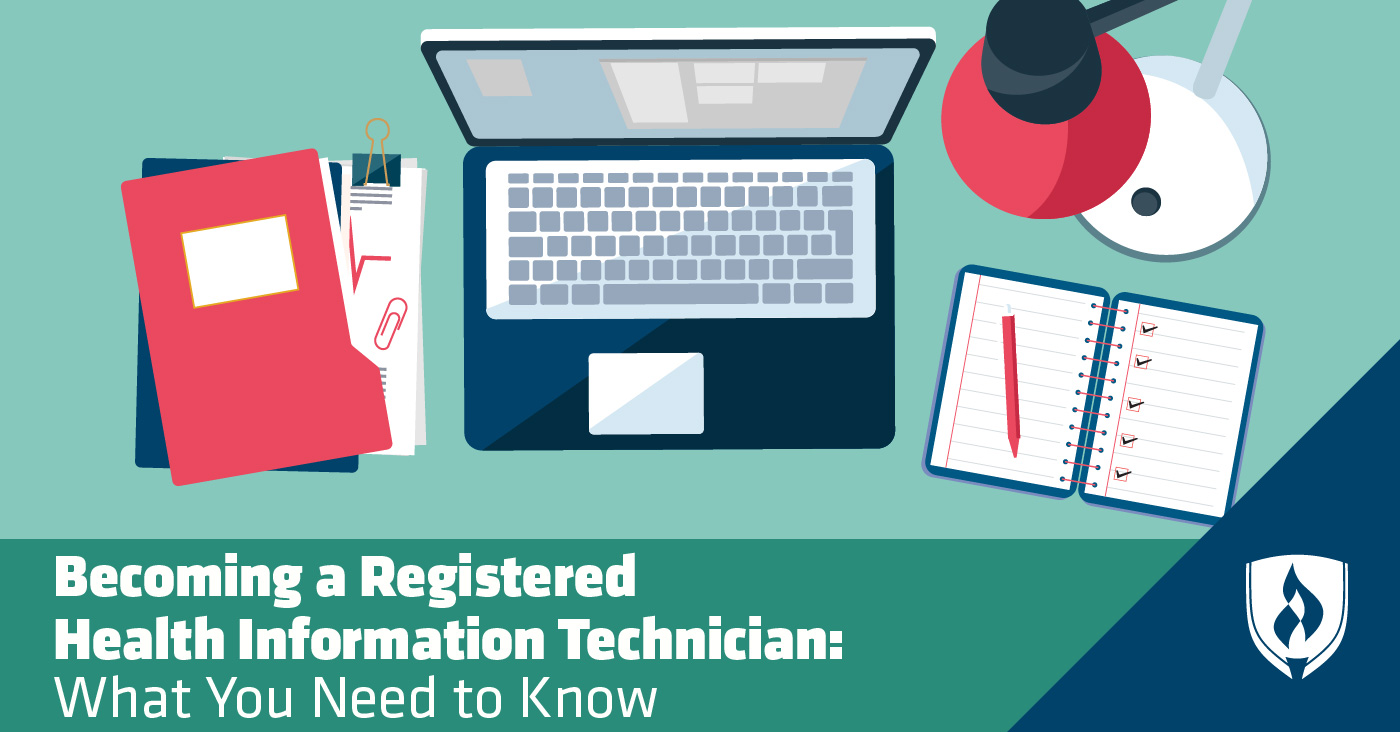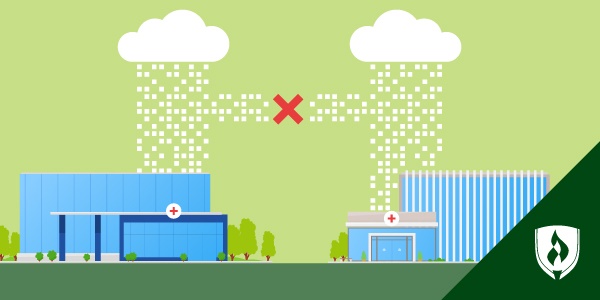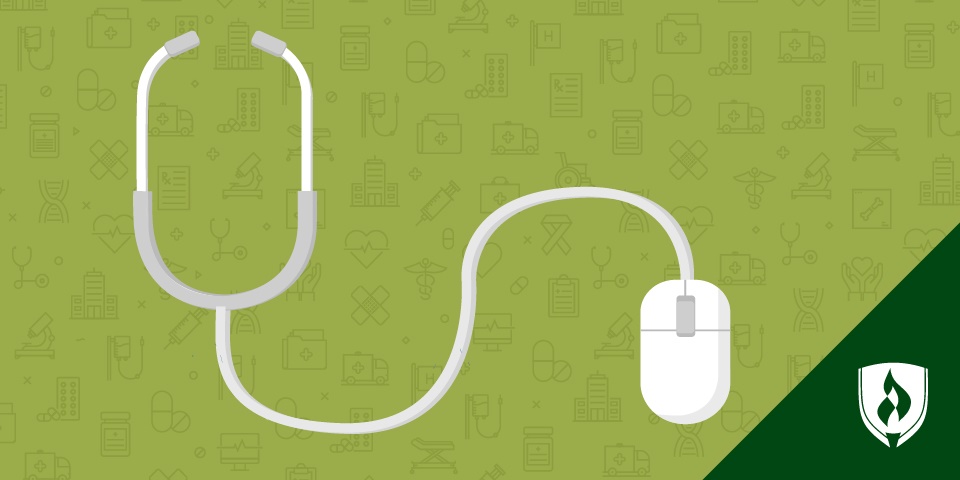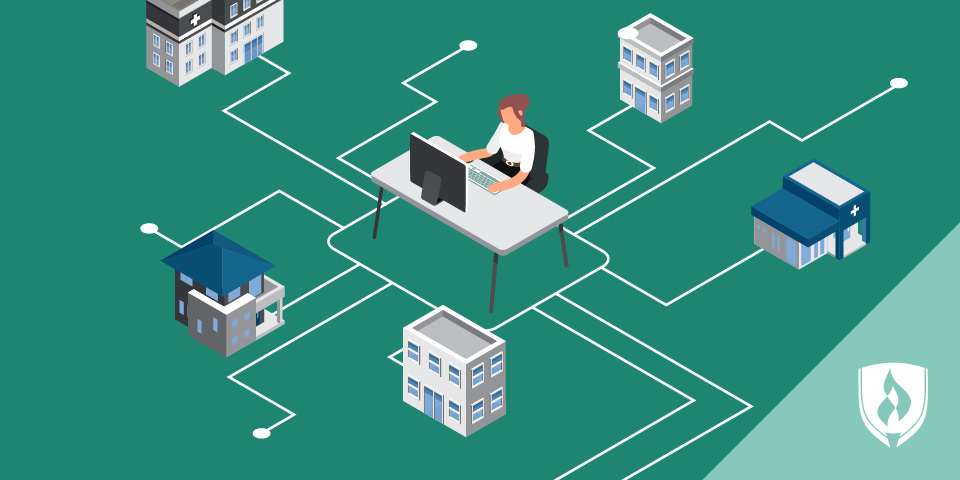Becoming a Registered Health Information Technician: What You Need to Know
By Kirsten Slyter on 09/09/2019

A health information technician is a key behind-the-scenes player in providing modern medical care. Their role places them at the intersection of healthcare facilities, patients and their insurance providers.
In this role they use specialized databases for cataloging, updating and tracking patient records across a complex healthcare ecosystem. This work isn’t just about keeping the bills paid for healthcare providers—the systematic collection and tracking of health records also has the potential to open up avenues of research and increase the overall efficiency of our healthcare system.
If you’re passionate about improving healthcare but you don’t necessarily want to be on the front lines of patient care, a career in health information might be an appealing route for you. If you’re looking to map out the road ahead in this field, you’ll want to consider becoming a Registered Health Information Technician (RHIT)®—one of the most common credentials for professionals in this field.
In this article, we’ll give you the lowdown on the work of a health information technician and what you’ll need to do to become an RHIT.
What do registered health information technicians do?
Registered Health Information Technicians are the experts on handling the ins and outs of electronic health records (EHR) systems. From maintaining patient health records to using classifications to code and categorize patients’ tests and diagnoses for insurance billing purposes, RHITs excel in communicating with healthcare staff and external insurance representatives to ensure that a patient’s journey is properly documented. The Bureau of Labor Statistics reports that daily duties for health information technicians typically include:1
- Reviewing patients’ records for completeness and accuracy
- Tracking patient outcomes
- Classifying and coding patients’ tests, diagnosis and treatments for insurance purposes
Where do registered health information technicians work?
Health information professionals can work in nearly any healthcare setting—and RHITs are no different. The BLS reports RHITs most commonly work in hospitals (36 percent) or physicians’ offices (19 percent), and nursing care facilities (6 percent).1 Though they hold a position that doesn’t typically have patient contact, having close access to providers and nurses can make finding key information easier.
Most health information technicians work full time. Those who work in hospitals or other 24/7 healthcare facilities, may work nights, weekends or holidays.
What skills do health information technicians need?
Since health information technicians play such an important role in the healthcare system, it’s no surprise that qualities like a strong work ethic and focus will serve you well in this industry. But what more do you need?
Bonnie Moore, RHIT, and Health Information Technician Program Coordinator at Rasmussen University, believes that many of the following characteristics will help you thrive in both an HIT program and career:
- Analytical skills: You’ll need to navigate medical records and diagnoses with potentially complex treatment plans in order to make correct coding decisions.
- An eye for detail: Accuracy is key when it comes to medical record keeping, and small details can have a big impact down the line.
- Integrity: Health information pros handle a lot of sensitive medical and financial information and must behave ethically with this information.
There’s a good chance you’ve already honed some of those characteristics naturally with life experience. But that’s just part of the equation—health information technicians will also need a strong handle on the following:
- Medical billing and coding
- Electronic health records systems
- Office software and productivity tools
- Health information management
- Medical documentation
- General patient care and medical knowledge
How to become a Registered Health Information Technician
Once you've set your sights on becoming an RHIT, you'll need to start laying out your next steps. Here's what you can expect on the road to earning this credential.
1. Complete an accredited degree program
The first step you’ll need to take on the road to becoming an RHIT is finding an accredited degree program. To be eligible for the RHIT credential you’ll need to attend a program accredited by the Commission on Accreditation for Health Informatics and Information Management Education (CAHIIM)—you can search for accredited programs on their website if you’re not sure of their status.2
Typically these programs are at the associate’s degree level and in the case of the Rasmussen University Health Information Technician program, can be completed fully online in as a few as 18 months.3 Over the course of the program, you can expect a mixture of classes that cover general medical knowledge and specific medical coding-focused coursework. In the Rasmussen Universtiy
HIT program, you’ll find courses covering the following topics:
- Health Information Law and Ethics
- Coding Foundations
- Ambulatory Care Coding
- Medical Terminology
This coursework is designed to align closely with materials covered in the RHIT national certification exam so students will be able to quickly pursue certification post-graduation.
2. Apply, prepare for and pass the certification exam
Near the end of your time in an accredited HIT program, you’ll want to turn your focus toward passing the national certification exam, which is administered by the American Health Information Management Association (AHIMA). This comprehensive multiple-choice exam is open for graduates and students in the final term of their program. The exam spans several “domains” including:
- Data Content, Structure and Information Governance
- Access, Disclosure, Privacy and Security
- Data Analytics and Use
- Revenue Cycle Management
- Compliance
- Leadership
While taking on a wide-ranging test at the end of a program might feel a little daunting initially, don’t let it overwhelm you. The Rasmussen University HIT program aims to streamline much of this process, with the cost of your first attempt at the exam included in the total program cost.4
Rasmussen Univeristy also provides high-quality exam prep that aligns with the RHIT certification exam itself, so you’ll have everything you need to prepare for the exam effectively. It’ll take some study time but once you’ve passed, you’ll officially be an RHIT—simple as that!
3. Consider advancing your career
While it may have been a long road to reach this point, it’s really just a very substantial first step on the path to a career in health information.
“Most coding positions in larger outpatient facilities, hospitals, outside coding and insurance companies, and outpatient surgical centers now require an RHIT or higher-level coding credential to get a job,” Moore says. “If a student has no previous experience, an RHIT credential often will be the piece that opens the door to getting an interview.”
This substantial first step will help you get established, but you may want to consider additional options for advancing your health information career down the line. If you’re interested in pursuing leadership roles within your organization, consider earning a Health Information Management Bachelor’s degree in the future. The good news is that by completing an HIT program and earning the RHIT credential, you’ll already have an excellent jump start on many of the competencies needed for this program.
As you progress further into your health information career, you may want to consider earning additional credentials like the Certified Tumor Registrar (CTR)® from the National Cancer Registrars Association or the Registered Health Information Administrator (RHIA)® credential from AHIMA.
Take the first step toward RHIT
Health information professionals play a crucial role in our healthcare system—their work directly influences the bottom line of providers and the uniform cataloging of health information opens a world of potential for improving outcomes and the delivery of care. Becoming a Registered Health Information Technician is an excellent option for those looking to get established in this important healthcare focus area, and earning an associate’s degree is a huge part of it. If you’re ready to take the first step toward becoming an RHIT, visit the Rasmussen University Health Information Technician program page.
Stay up to date with the latest health information trends.
1Bureau of Labor Statistics, U.S. Department of Labor, Occupational Outlook Handbook, [information accessed August 2019] www.bls.gov/ooh/. Employment conditions in your area may vary.
2The Health Information Management accreditor of Rasmussen University is the Commission on Accreditation for Health Informatics and Information Management Education (CAHIIM). The following Health Information Technician programs at Rasmussen University are accredited by the Commission on Accreditation for Health Informatics and Information Management Education (CAHIIM) based on their associate-level Health Information Management standards and are reaffirmed through the following dates: Rasmussen University– Bloomington, Eagan, Lake Elmo/Woodbury, Mankato and St. Cloud, Minnesota, through 2022; Rasmussen University – National Online through 2025. All inquiries about the program’s accreditation status should be directed by mail to CAHIIM, 200 East Randolph Street, Suite 5100, Chicago, IL, 60601; by phone at 312-235-3255; or by email at [email protected].
3Completion time is dependent on transfer credits accepted and the number of courses completed each term.
4The application fee for each qualified student’s first exam attempt is included in the total program costs. Should you need to take the exam more than once to receive a passing score, you will be responsible for all subsequent exam application fees.
Registered Health Information Technician (RHIT) and Registered Health Information Administrator (RHIA) are registered trademarks of the American Health Information Management Association.
Certified Tumor Registrar (CTR) is a registered trademark of the National Cancer Registrars Association.




